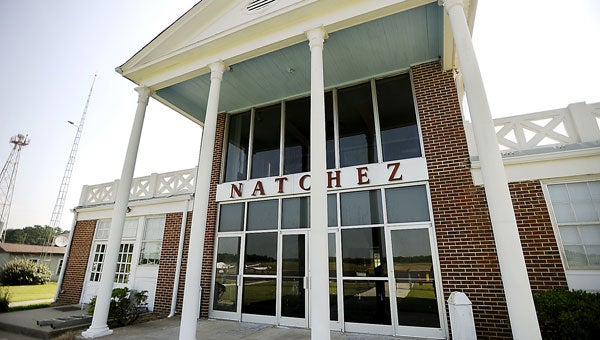Vidalia’s new development code makes significant changes to 1977 ordinance
Published 12:00 am Sunday, May 17, 2015

The recently approved development plan for the city of Vidalia changes the four basic zones in the 1977 ordinance to nine development zones. The code also includes and sign ordinance and other new requirements for new developments in the city.
VIDALIA — The last time the City of Vidalia adopted a zoning ordinance, a young Jedi Luke Skywalker first appeared in theaters and Apple introduced one of its first personal computers.
Thirty-eight years later, Star Wars fans are eagerly anticipating the seventh installment in the movie franchise, Apple’s newest computers can be held in the palm of one’s hand and, in April, the Vidalia Board of Aldermen unanimously approved the first major overhaul of the city’s development code since 1977.
“The planning consultant we worked with said the code that we had was good for its time — top of the line,” Concordia Economic Development Executive Director Heather Malone said. “That is no longer the case. This new code brings us back to what the standard is now.”
Malone and her staff helped the city develop a new master plan. The city’s new development code was part of the master planning process.
The changes to the code are significant.
The old code was 57 pages long and was not very specific, Malone said. The new code, which is 135-pages long, is more comprehensive and provides more detailed illustrations.
In 1977, the zoning ordinance called for four general districts, one each for residential, business, industrial and open land areas of the city.
The new code expands the zoning districts to nine, including three separate residential districts, three separate commercial districts and a separate district for the city’s town center.
“Most of the changes are based on the goals residents and community members said they wanted to achieve,” Malone said.
Beginning in 2010, residents and community leaders came together in a series of meetings to establish goals for the future of the city.
“One of the goals was creating a new town center,” Malone said.
Other widely shared goals included preserving the city’s small town character and improving the city’s appearance and attractiveness.
Two new sections of the development directly address these issues.
“Now we have a complete set of codes for signage and environmental standards,” Malone said.
For the first time in Vidalia’s history, a sign ordinance details what signs are allowed in the various zoning districts.
Existing signs are not required to meet the code, but if an owner wants to significantly change a sign or build a new sign, the owner will have to apply for a sign permit, the code states.
“Existing buildings are not required to meet the new code,” Malone said. “But if an owner does a major renovation that requires a building permit, they will have to abide by the new code. If you apply for a new sign, you will have to get a new permit.”
The new code requires that old signs, for businesses that are no longer in operation, shall be removed within 90 days of the business’ closure.
The new sign ordinance prohibits banners, streamers, animated displays, pennants and propellers, except for temporary banners specifically permitted in the ordinance. Signs affixed to trees, utility poles and street signs are also prohibited.
Malone said the most challenging part of the development code is convincing residents that the changes in the code are vital to the city’s growth.
“Any change is difficult,” Malone said. “We are requiring more landscaping, more lighting, and we have the sign ordinance.”
Landscaping and trees are required for new parking lots. Sidewalks are required along public roads in most districts.
All of the new requirements support an effort to make the city look better and ultimately increase property values, Malone said.
“We had several developers who weren’t comfortable with the current code because it was so general and broad,” Malone said.
Many of the developers worried that the code allowed adjacent developments that could adversely affect their property, Malone said.
“From what we were hearing, developers said they wanted a code that protected their investment,” Malone said.
Wilmar Construction contractor Mark Carter Sr. agrees that Vidalia needs to look better.
“I am involved in properties on Carter Street, from one end to the other,” Carter said. “When I drive by some properties, there is no doubt that we need to look better.”
Carter said new ordinances could help, as long as they don’t go overboard.
Carter said he hasn’t read the new code, but that he has talked to the planning consultant who wrote the new ordinance.
“My point to him was that when you make changes to the code to update requirements, it is typically going to cost you more money,” Carter said. “There is a fine line.”
Carter said ultimately the code would only be effective if it is implemented.
“Any code is only as good as it is enforced, or enforced equitably,” Carter said. “You’ve got problems if you don’t enforce things equitably.”
Malone pointed out that the code is not set in stone and changes can be made, if necessary.
Malone said that the city plans to use the city’s design and construction of its own new technology center as an opportunity to go through the code process step-by-step with the architect and contractor.
Working through the process will highlight areas that might need changing, Malone said.
“It will give us the opportunity for us to work out some of the kinks and tweak the code to make it more user friendly.”
Mayor Hyram Copeland did not return phone calls for this story.





